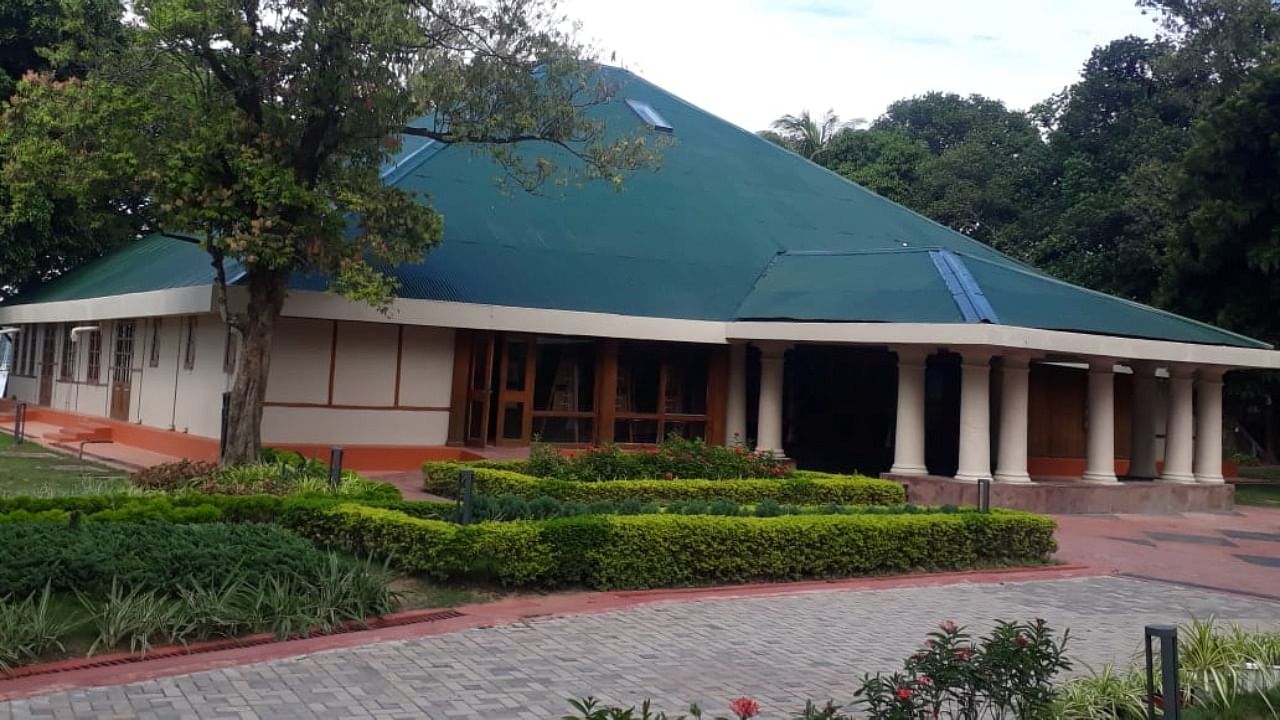
The golden coloured inscriptions and the folk music emanating from the speakers fitted with the "cultural wheels" catches the visitors straight to the life and culture of various ethnic tribes who lives along the 1,450-km-long stretch of the river Brahmaputra across Assam.
A few steps ahead atop "Borphukanar tilla" (Borphukan's hillock) stands the Scottish-type wooden bunglow, which was constructed in 1850 by the British and was converted into Brahmaputra River Heritage Centre by Assam government recently. The centre named as Mahabahu Brahmaputra River Heritage Centre, situated on the bank of the river Brahmaputra at Panbazar in Guwahati was opened for public on October 3.
With paintings, old photographs and artefacts on display it looks like a museum inside. "No. It is different from a museum," Sartaj Alam, the creative consultant of the project told DH.
"Unlike a museum, the theme of the galleries here will change from time to time. Currently, we have a gallery that shows the life along the river and another that displyas the history and evolution of Assam's traditional textiles,"
"We have a 100-year-old mekhela sador (traditional Assamese women garment) that shows the ancient designs. We have a handloom that weaves traditional items for visitors. Fishing equipments used by various tribes living along the Brahmaputra are also on display. In another gallery, Avinibesh Sharma displays photographs, history and importance of the traditional Assam type houses and many more," he said.
The wooden house, which was renovated and restored as a heritage property by Guwahati Metropolitan Development Authority (GMDA) also has a gallery displaying traditional musical instruments belonging to various tribes. "Right now we have 64 instruments on display and we will soon have 210 instruments," Alam said. There is another space showing life in Majuli island including the craft of mask making.
Outside there is an amphitheatre with paintings displaying Assam tea gardens, rich wildlife and how Lachit Borphukan, the Ahom General marched from the tilla with his soldiers and launched the attack on the Mughals in the Battle of Saraighat in March 1671. The Ahoms, who ruled Assam for nearly 600 years (1228-1826) inflicted the most crushing defeat on the Mughals at Saraighat. "This is how this place was later known as Borphukan's tilla," Alam said.
Assam was annexed to the British in 1826.
"The post of Deputy Commissioner was created for Guwahati in 1839. But the city had no appropriate house at that time to accommodate Captain James Matthie, the first DC. Several sites were surveyed before Barphukanar Tilla on the banks of the Brahmaputra, where cannons used in the Battle of Saraighat lay scattered, was chosen," said a statement issued by Assam government on October 3. Post-independence, it continued to be the DC's bungalow until 2011 when a project to convert it into a heritage site was taken up by GMDA.
"Those visiting Assam from outside can have a glimpse of life and culture of various tribes here in this centre," Alam said.
Check out latest videos from DH: